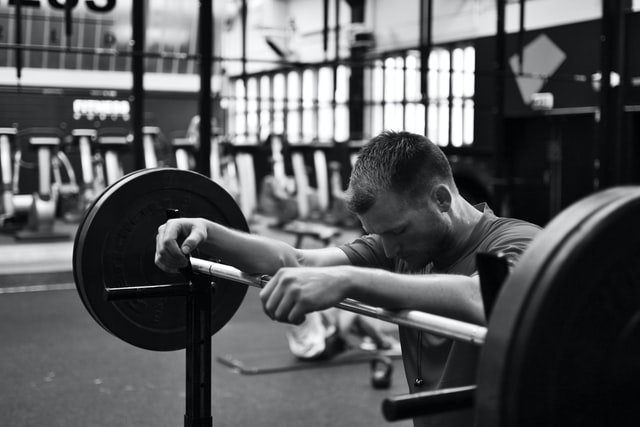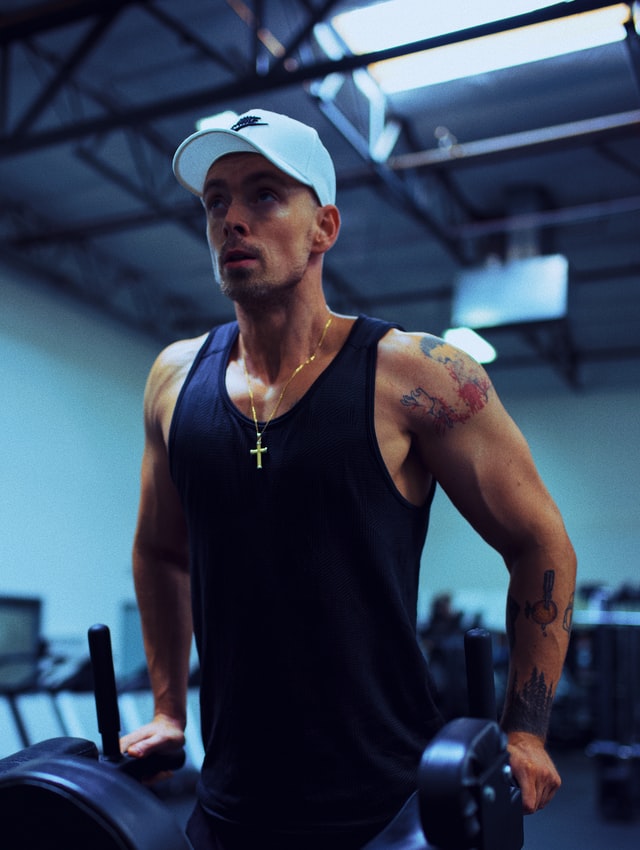Training programming and its phases
When designing a training schedule, the elements and factors that constitute a work plan are organized in a concrete and detailed way. In this case, the objective will be to improve strength qualities so that they contribute effectively to the achievement of specific performance in competition.
In this series of articles we deal with some of the most important concepts of strength training, collecting notes from the recently published book Strength, Speed and Physical and Sports Performance written by renowned researchers Juan José González Badillo and Juan Ribas Serna.
SUMMARY
- Training programming is the organization of the sequence of efforts and rest times to achieve specific goals.
- Training must be quantified in order to make programming decisions based on data and not opinions.
- The evolution of the loads during the programming depends, fundamentally, on three determining factors: the initial situation of the subject, the strength needs in the sport specialty and the strength needs of the subject himself.
Introduction to the concept of programming
Programming is a way of organizing various activities to achieve specific goals, and for this reason it has nothing in common with carrying out training routinely, or based on improvisations that are not supported by a plan that justifies and delimits them. the margin of variation that can be admitted from what was planned. This means that programming must ensure, on the one hand, the unity of the training process and, on the other, its flexibility, as a consequence of the systematic and frequent control and evaluation of the process itself.
The programming of daily training is understood as a task made up of multiple subtasks, but unique as a process, whose objective is to improve the performance of the athlete or of any person, and which is expressed through a sequence of efforts duly adjusted according to specific objectives and the subject’s training needs and possibilities. This unit of the training process is fulfilled when said programmed sequence of efforts is respected.
Training programming is expressed as a sequence of efforts adjusted to objectives
But for this sequence to be respected, flexibility must also be given. The flexibility of the programming allows us to modify the specific load programmed (weights, series and repetitions per series) for one or several days so that the effort made is the one foreseen and not another different one. In other words, the target load (proposed load) is modified so as not to modify the programmed actual effort (actual load). Although the modification of the proposed load does not necessarily guarantee an improvement of the program or of the performance, rather it allows maintaining the programmed, the unity of the programming.
Only the evaluation of the elements of the training process can justify the opportune revisions of the programming in progress and of those that are going to be carried out in the future. From the foregoing it can be deduced that the trainer’s mission as a programmer, rather than determining a detailed series of activities to be carried out during training practice, is a permanent task of structuring, analyzing and constantly reviewing what he is doing. Among the functions of the coach is to observe daily the evolution of the athlete’s form, something that, especially in strength training, is not done frequently.
Only if this systematic observation is carried out, a true source of the coach’s experience, can it be said that someone is being trained. Otherwise, only a standard or average athlete model is trained that rarely, OR never matches the actual athlete. This has the consequence that the programmed loads will quickly stop adjusting to the true training needs and possibilities of the subject, and, therefore, the real load will not be the programmed one.
The trainer’s mission as programmer is the permanent structuring, analysis and revision of what is being trained.
This same observation also aims to analyze the variables involved in the process, which will allow us to discover the possible connections and reciprocal influences between these variables and between them and the results.
If we set ourselves the task of training in this way, we will be in the best conditions to understand, apply and adapt the contributions of science to our daily practice. This, necessarily, will lead to the development of an authentic training experience, which is what makes the coach improve his work and his knowledge every day.
The effects of training on physical and sports performance arise from the application of a series of stimuli organized in such a way that they allow a sufficient development of the physical condition and of the abilities of any sport specialty or type of performance that is intended.
At this point, it will be necessary to focus on the training that is usually considered as “strength training”, although all training aimed at improving physical condition and almost all sports performance are strength training itself.
The organization of the training is carried out through a schedule. Programming means “devising and ordering the actions necessary to carry out a project”. (RAE Dictionary). In the case of sports training, for some time programming has been defined as the expression of a series or ordered succession of efforts that are dependent on each other. This definition includes the concepts that define the term “programming”.
“Devise”, because it is thought with a determined degree of effort, is an idea, which is what is programmed. But, in addition, these efforts are actions that must be ordered, second concept of the definition, and in an interdependent way, to carry out the project of developing the physical and sports condition of the subject or sports group. However, in the literature and in the jargon of sports training, the term “periodization” is used very frequently to refer to the organization of training. Periodization means “action and effect of periodizing”, and periodizing means “establishing periods for a historical, cultural, scientific process…” (DRAE).
A training process that allows the correct use of loads and recovery times to avoid excessive fatigue
The most striking thing is that the term “periodization” is used as the solution to the training problem, because “periodized” training is considered as “a training process that allows the correct use of loads and recovery times to avoid the excessive fatigue” or “the division of annual training or a cycle into appropriate phases with the aim of reaching the peak of maximum performance at the appropriate and predetermined time” or “the process through which the intensity and volume of training is manipulated”. the right way for the athlete to reach their maximum performance at the right time, minimizing the risk of injury, stagnation and overtraining”.
But, of course, “periodization” by itself does not ensure any of this. In sports, establishing periods does not guarantee a good workout. In the same way, it is evident that, in a project, dividing the process into periods does not guarantee that it is a good project. For this reason, the term “periodization” is not useful and, furthermore, it is not adequate for what it intends to define, because “periodization” is not the “organization of the activities of a process (training)”, but the “division into periods ”
The term “programming” or “program” is the one that adjusts to what you really want to do, which is, as indicated, “devise and order the actions necessary to carry out a project”. Therefore, the appropriate term would be programming. Although saying that the training has been “scheduled” does not ensure anything either, since the programming can be good or bad. However, the term is correct. Its meaning corresponds to what is intended to be done: “devise and order the actions”, which in this case means above all organizing a sequence of efforts (loads) to achieve the intended objective, even if this sequence is not correct and therefore does not the objectives are achieved.
Therefore, the term “scheduling” should be used instead of “periodization.” This proposal is even more justified if one takes into account that when one speaks of “periodization” what one wants to express is a form of “programming”, of designing a program to systematically and specifically direct the training and the variation of the exercise. volume, intensity and exercises to achieve the best results at the right time. This would really be programming. The problem is that unnecessary terms tend to be introduced without considering their suitability.

But the matter is complicated when the term “non-periodized” is also used in the language of training. It would literally mean that something, training is supposed to “not be divided into periods”. If periodizing is dividing into periods, not periodizing would mean that the entire process, of whatever type, is considered as a unit, without changes that justify differentiating some moments from others, and therefore it would be a question of “a single period”, in the one that “everything happens or is done the same”: that is, every day the same load is applied, the same stimulus, the same training.
This situation is unrealistic, because, on the one hand, it cannot be guaranteed that the same load is always applied, and, mainly, because no person who is dedicated to training other people to improve their physical and sports condition can be happen to ignore one of the few principles or rules of adaptation that can be considered as such, such as the principle of the progression of the loads, and another that, in part, is already included in the first one, which is the variability of the loads. loads.
Therefore, this distinction does not seem very useful. Although much space has been devoted in the literature to comparing the effect of “periodized” versus “non-periodized” training. Generally, the “non-periodized” has always had the worst luck. Other terms related to the organization of training refer to the phases or periods that comprise a space of training time. It is very common to refer to the “preparatory”, “competitive” and “transition” periods, which occur in the order indicated.
At the end of the “competitive period” the competitions are held (maybe also within the “competitive period” itself). None of these terms, in our opinion, is appropriate, as will be seen below, nor does their name serve to improve the training program. If “preparing” is “performing the necessary operations to obtain a result or product”, why isn’t “competitive” also “preparatory”, if the athlete has not even competed yet? Doesn’t the athlete continue to “prepare” until reach the competition?, what is the indicator that the “preparatory period” is over and you are already in the “competitive”?, what change or magnitude of change in training justifies it?, do all the specialists understand what itself? Or is it simply a question of dividing or naming the total training time into two or three parts or denominations?
On the other hand, if “transition” is “the action and effect of passing from one mode of being (a state) to another”, “transition” would be the passage from each of the “periods” to the next, not the denomination of one of them. It would be much more reasonable to call this supposed “transition period”, “recovery” or “detraining” period, or something similar.
Very close to this denomination is the one that includes four other terms and is the one that divides the space of training time into “general preparation phase”, “special preparation phase”, “competitive phase” and “transition phase”.
training time in “general preparation phase”, “special preparation phase”, “competitive phase” and “transition phase”.
General preparation phase
In this case it is unlikely that all professionals understand the “general preparation phase”. Because by its very name, the “general” can include many activities of a different nature, which, in sport, in most cases are far removed from the type of performance typical of the specialty for which one trains. In addition, it would be necessary to consider which sports or sports specialties should “make a general preparation”, because if the “general” activity is not reflected in an improvement. of specific performance, it would not make sense for it to be carried out. A “general activity” remote from the mechanical and metabolic characteristics of competitive activity is at least unlikely to have (positive) transfer to competitive exercise, but rather could cause interference (negative transfer), or, in the best of log cases, being sterile and wasting time.
Special preparation phase
The “special preparation” phase could be understood to a greater extent, since it can be interpreted as the phase in which you train with the exercises closest to those of the competition and with those of the competition itself, including the speed / intensity values. and volume typical of the competition or close to them. Really, all the preparation time should be “special preparation”, if by this is meant the application of training that truly has a high probability of having a positive effect on specific performance.
competitive phase
About the “competitive phase” and “transition” comments have already been made previously. Another group of widely used terms is “macrocycle”, “mesocycle” and “microciole”. The first source of confusion with this terminology is that the range of time to which we can refer is not a specific one, but multiple, which means that using one of these terms without adding the time that we want it to understand will always be imprecise and will generate confusion. . For example, when we refer to a “macrocycle”, the time it comprises can range from several weeks (10-12) to several years, for example four, an Olympic cycle. But of course, there will be those who say no, that a “macrocycle” does not cover more than one year.
In other words, we already have three measures for the same term, and they are quite different measures and all of them are used. The same happens with the other terms, although the average time is lower for the “mesocycle” and even lower for the “microcycle”. But what deserves more attention is the justification for which the different terms are usually used. For example, if we train for a period of 12 weeks in order to improve strength, and we consider the first “mesocycle”, of three weeks, to be a “mesocycle” of hypertrophy”, we would be saying that during the remaining 9 weeks it is no longer stimulated nor does “hypertrophy” develop, or if from week 4 to week 6 we have the “mesocycle” of “maximum strength”, we would have to understand that in the previous “mesocycle” strength has not been trained or improved.
We consider that it is out of the question that none of these conclusions is reasonable, so it must be admitted that the naming of these time slots with any of these names does not serve to better understand training, nor to improve programmed training, nor for communication between professionals and specialists in the field of physical and sports training.
Training expressed through numbers can be analyzed and quantified, giving you the opportunity to draw data-driven conclusions and make informed decisions.
In short, the training is not organized through “names”, because these do not have the property of determining what the load is. Training training is organized through “numbers”. Training expressed through numbers can be analyzed and quantified, giving you the opportunity to draw data-driven conclusions and make informed decisions. It serves to express with greater precision than in any other way what the applied load is and to check the acute and medium and long-term effect it produces, and also allows communication between training professionals.
We understand that in connection with this aspect of programming terminology, only the term “cycle” should be used, ie “programming a training cycle”. Therefore, we only use the term “cycle” when we want to refer to the extension of a certain training period of time.
We define a training cycle as a training period of time in which all the necessary loads have been applied, according to the programmer’s criteria, to achieve the expected objective. It could also be expressed as the process in which the necessary evolution of the main characteristic variables of training load is produced: volume, intensity and type of exercise, to achieve the expected objective.
The evolution of the loads depends, fundamentally, on three determining factors: the initial situation of the subject, the strength needs in the sports specialty and the strength needs of the subject himself. At the end of the cycle there can be a competition or a test or even none of the two controls, and there will always be a recovery time before starting another training cycle. Although occasionally one can speak of “phases” within the training cycle, it really is a continuum in which to identify at what point in the cycle an athlete is, it could be added that he is in the “phase” of high, medium or low volume, or in the “phase” of high, medium or low intensity or any other reference of the variables that determine the training load.
The evolution of the loads depends, fundamentally, on three determining factors: the initial situation of the subject, the strength needs in the sports specialty and the strength needs of the subject himself.
The cycles can have different lengths. For this reason, for a better definition of the cycle, we must add its duration, generally indicating the number of days or weeks it comprises.. The adaptation processes oriented towards performance improvement are developed through cycles that are repeated periodically. Cycles aimed at improving a physical quality are common in all training sessions, whatever the sport, although they will not develop in the same way in all cases.
When the development needs of the physical qualities are high, the characteristics of each cycle (volume and intensity values, mainly) are more accentuated: the intensities and volumes are higher and the differences between the maximum and minimum values are greater. The opposite occurs when the needs for these qualities are low.
The general objective of any training cycle is the improvement of the manifestation of strength, resistance and force production in the unit of time in specific actions, that is, the improvement of useful force. The way to develop each of these cycles will be different, as we have indicated, depending on the characteristics of the sports or sports specialties and the specialties of the subjects.
The degree of development of the physical qualities will be different according to the specialties. The need to significantly improve some quality above the others also determines the characteristics and orientation of the cycle. The duration of a complete cycle is conditioned by the characteristics of the sport, but fundamentally by the adaptation time. The adaptation time that most influences the duration of the cycle, is the one that is necessary for the development of physical qualities. Although good physical condition is not enough to ensure sports form (specific form), it is the first condition and absolutely necessary.
full cycle length for strength training should not exceed 14-16 weeks
In any case, the full cycle length for strength training should not exceed 14-16 weeks. The most effective length could be between and 12 weeks. Other shorter cycles can be used to maintain or recover or at least approach recently achieved levels of strength.
The effectiveness of a training cycle will depend to a large extent on the combination of volume and intensity values, but always, both the result and the values of the variables themselves will be conditioned by the initial situation of the subject, state of performance. initial, initial work capacity, current training time, current detraining time, age… and to all this we must add the objectives that are sought and the strength needs of the sporting specialty and the subject. Naturally, all these nuances will be developed later in the contents related to training programming.








